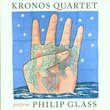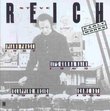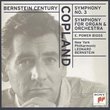| All Artists: John Tilbury Title: Cage: Sonatas & Interludes (20C) Members Wishing: 1 Total Copies: 0 Label: Decca Release Date: 7/31/2012 Genre: Classical Styles: Chamber Music, Forms & Genres, Sonatas Number of Discs: 1 SwapaCD Credits: 1 UPC: 028947842507 |
Search - John Tilbury :: Cage: Sonatas & Interludes (20C)
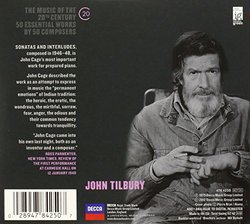 | John Tilbury Cage: Sonatas & Interludes (20C) Genre: Classical
I ve been around at several gatherings ... here in New York City where I heard John Cage overhaul the family piano in his own way ... not only did I feel that this sort of piano music was really a keen fresh breeze, but a ... more » |
Larger Image |
CD Details
Synopsis
Product Description
I ve been around at several gatherings ... here in New York City where I heard John Cage overhaul the family piano in his own way ... not only did I feel that this sort of piano music was really a keen fresh breeze, but a welcome thing in the way of a health change from the old ways you hear the average piano being played. It might be a surprise to learn that this description of Cage s music for prepared piano was written in 1947 by Woody Guthrie, legend of American folk music. But in the years immediately after World War II, Cage was attracting the enthusiastic attention of many fellow artists, and of critics, including the notoriously waspish Virgil Thomson, who wrote in 1945 that Cage had developed his handling of rhythm to a point of sophistication unmatched in the technique of any other living composer , including Cage s teacher Arnold Schoenberg, whom Thomson compared unfavourably with his brilliant pupil.
Rightly considered as a great American original, Cage was also a composer whose influences included at least three major figures in European music: his teacher Schoenberg, Anton Webern and Erik Satie, whom Cage felt to be not only immensely original, but also outrageously undervalued by most musicians. He wrote that in Satie s music, the structures have to do with time, not pitch , and it s not far-fetched to hear something of the same idea in Cage s most important work for prepared piano, Sonatas and Interludes, composed in 1946 48. Cage uses forms that are familiar to anyone who knows the short pre-Classical keyboard sonatas of Domenico Scarlatti: a simple design of two repeated halves, though in Cage these are often sharply contrasted. But within these straightforward structures Cage fashions a revolution in the nature of the sounds that can be drawn from a piano, by preparing given notes with different materials.
Satie had contemplated a simple version of this in Le Piège de Méduse (1913), instructing the pianist to insert pieces of paper between the strings; and both Ravel and his pupil Maurice Delage had experimented with modifying piano sounds for particular effects. Henry Cowell another influence on Cage took a slightly different approach, developing new techniques for playing the piano without using the keys and hammers. But these precursors take nothing away from Cage s remarkable innovations: he was the first composer to attempt the systematic modification of the piano in order to draw a completely new range of sounds from it. He began to write for prepared piano in the late 1930s, and his technique for sophisticated preparation reached its high point in Sonatas and Interludes, for which no fewer than forty-five notes of the piano require preparation using carefully placed screws, nuts, bolts (of different sizes), rubber and plastic.
Reviewing the first complete performance of Sonatas and Interludes at Carnegie Hall, New York, on 12 January 1949, Ross Parmenter wrote in the New York Times that John Cage came into his own last night, both as an inventor and a composer . He described Cage s seventy-minute piece for prepared piano as a haunting and lovely work, which left one with the feeling that Mr Cage is one of this country s finest composers and that his invention has now been vindicated musically .
A few months after this premiere, Cage travelled to Europe on a scholarship, heading for Paris where he studied Satie manuscripts in the Bibliothèque nationale. It was with the So-natas and Interludes that his music first became known to the European avant-garde. He introduced himself to Pierre Boulez, and the two became close friends for a few years (en-joying a remarkable correspondence), until their differing musical aims led them to drift apart. Boulez in turn introduced Cage to Messiaen, who invited the young American to play Sonatas
Rightly considered as a great American original, Cage was also a composer whose influences included at least three major figures in European music: his teacher Schoenberg, Anton Webern and Erik Satie, whom Cage felt to be not only immensely original, but also outrageously undervalued by most musicians. He wrote that in Satie s music, the structures have to do with time, not pitch , and it s not far-fetched to hear something of the same idea in Cage s most important work for prepared piano, Sonatas and Interludes, composed in 1946 48. Cage uses forms that are familiar to anyone who knows the short pre-Classical keyboard sonatas of Domenico Scarlatti: a simple design of two repeated halves, though in Cage these are often sharply contrasted. But within these straightforward structures Cage fashions a revolution in the nature of the sounds that can be drawn from a piano, by preparing given notes with different materials.
Satie had contemplated a simple version of this in Le Piège de Méduse (1913), instructing the pianist to insert pieces of paper between the strings; and both Ravel and his pupil Maurice Delage had experimented with modifying piano sounds for particular effects. Henry Cowell another influence on Cage took a slightly different approach, developing new techniques for playing the piano without using the keys and hammers. But these precursors take nothing away from Cage s remarkable innovations: he was the first composer to attempt the systematic modification of the piano in order to draw a completely new range of sounds from it. He began to write for prepared piano in the late 1930s, and his technique for sophisticated preparation reached its high point in Sonatas and Interludes, for which no fewer than forty-five notes of the piano require preparation using carefully placed screws, nuts, bolts (of different sizes), rubber and plastic.
Reviewing the first complete performance of Sonatas and Interludes at Carnegie Hall, New York, on 12 January 1949, Ross Parmenter wrote in the New York Times that John Cage came into his own last night, both as an inventor and a composer . He described Cage s seventy-minute piece for prepared piano as a haunting and lovely work, which left one with the feeling that Mr Cage is one of this country s finest composers and that his invention has now been vindicated musically .
A few months after this premiere, Cage travelled to Europe on a scholarship, heading for Paris where he studied Satie manuscripts in the Bibliothèque nationale. It was with the So-natas and Interludes that his music first became known to the European avant-garde. He introduced himself to Pierre Boulez, and the two became close friends for a few years (en-joying a remarkable correspondence), until their differing musical aims led them to drift apart. Boulez in turn introduced Cage to Messiaen, who invited the young American to play Sonatas

 Track Listings (20) - Disc #1
Track Listings (20) - Disc #1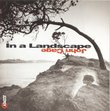
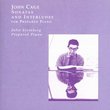
![Shostakovich: The String Quartets [Box Set]](https://nationalbookswap.com/cd//m/72/6472/6136472.jpg)
